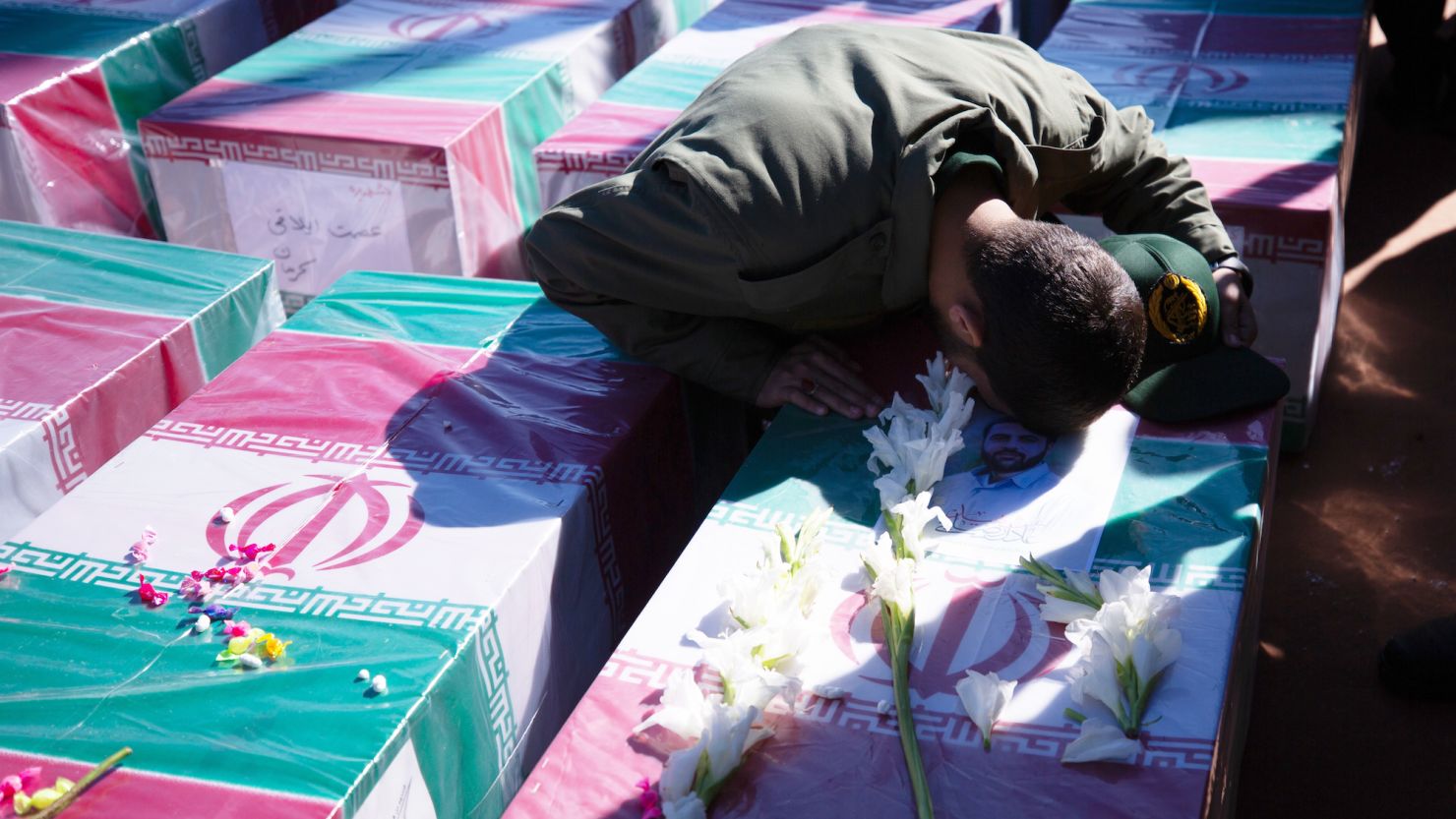Editor’s Note: Peter Bergen is CNN’s national security analyst, a vice president at New America, a professor of practice at Arizona State University and the host of the Audible podcast “In the Room” also on Apple and Spotify. He is the author of “The Rise and Fall of Osama bin Laden.” The views expressed in this commentary are his own. Read more opinion at CNN.
The Biden administration has gone to great lengths to prevent a larger regional war in the Middle East. Yet, already, there is a de facto regional conflict raging with all the possibilities for screw-ups and escalatory responses that are inherent in such a conflict. Like a frog in a slowly boiling pot of water, the region may wake up one day soon and realize it’s in the midst of an all-out war.

The danger of growing conflict is rising and threatens to entangle the United States. That’s partly why US Secretary of State Antony Blinken is visiting the Middle East this week: to try to stop the widening hostilities.
Consider just the past few days: On Thursday, a US drone strike killed the leader of an Iranian-based militia in Baghdad, the Iraqi capital. Iranian-backed militias in Iraq and Syria have launched at least 118 attacks against US troops in Syria and Iraq since the October 7 attack by Hamas inside Israel.
The strike in Baghdad was a calculated risk by the Biden administration, especially since there are growing calls in Iraq to expel some 2,500 US troops that remain in the country on a mission to counter ISIS. The Baghdad strike has amplified those calls to expel US troops, according to the leading Arabic-language newspaper Asharq Al-Awsat.
In purported support of Hamas, the Houthis, an Iranian-backed militia that controls much of Yemen, have launched 23 attacks at commercial vessels in the Red Sea since November 19 using a variety of missiles, drones and sea-based drones.

The Red Sea approach to the Suez Canal is one of the world’s busiest shipping lanes, and some key shipping companies have suspended their operations in the area.
On Wednesday, the US and a dozen other allied nations warned the Houthis that they must stop their attacks on commercial shipping or face unspecified consequences. That followed the sinking by the US three days earlier of three Houthi speedboats in the Red Sea to prevent them from hijacking a commercial vessel.
On Tuesday, a leader of Hamas, Saleh al-Arouri, was killed by a drone strike in the Lebanese capital, Beirut, adding to the growing tensions between Hezbollah and Israel. There have been near-daily tit-for-tat exchanges of fire between them along the Israel-Lebanon border since October 7. Al-Arouri was killed in an area of Beirut dominated by Hezbollah, which has vowed to avenge his death.
On Monday, Israel launched air strikes in the Syrian capital, Damascus, hitting what it said were Syrian military targets. The Syrian regime was aided by Hezbollah fighters during the Syrian civil war, and it has publicly supported Hamas.
Adding to all of this on Thursday, ISIS claimed responsibility for two suicide attacks at a memorial service for the key Iranian military leader General Qassim Suleimani that killed at least 84 people. ISIS is a Sunni jihadist group that regards the Shia clerics who run Iran as heretics. Attacks by Sunni jihadist groups inside Iran have been relatively rare, and this attack marks a significant escalation by ISIS against Iran. Iran’s leaders have promised to seek revenge against the terrorist group.
The growing conflicts in the region are partly the result of advances in military technology over the past two decades and the growth of proxy warfare in the Middle East during the same time period. It’s easy to forget that before the 9/11 attacks, there were no armed drones capable of carrying out targeted strikes far from the base of the attacker. The use of armed drones by the US became a hallmark of the “war on terror,” and today, countries like Israel and groups like the Houthis have also adopted the tactic.
Meanwhile, during the same time period, the Middle East saw a surge of proxy forces allied in some fashion with Iran. This phenomenon was precipitated partly by the US invasion of Iraq in 2003. The war in Iraq produced only one real winner, Iran, according to the official US Army history of the conflict. Iran today continues to support militias in Iraq, according to a 2023 report prepared for the British House of Commons.
In Lebanon, Hezbollah has received hundreds of millions of dollars from Iran, and thousands of its fighters have trained in Iranian camps, according to the US State Department. In Syria, Iran also has considerable influence, and its own forces are based there. The Houthis in Yemen are armed and trained by Iran, while Hamas has also received arms from Iran.
This all makes for a simmering mess, because while armed drones and proxy forces allow powers like the US, Israel and Iran to avoid all-out conventional wars, reliance on drones and proxies is also playing with fire as they move all these powers closer to all-out conflict. The history of warfare, after all, suggests that it is the most uncertain of human enterprises, and seemingly relatively unimportant events like the assassination of Archduke Franz Ferdinand in Sarajevo in 1914, which became a key trigger of World War I, can instigate broader conflicts.
In Israel, there is now a growing lobby for a war with Hezbollah, a far better armed and more militarily proficient force than Hamas. The last time that Israel and Hezbollah fought a full-scale war was in 2006, and the conflict was something of a draw.
In Lebanon, there is little appetite for another war as the 2006 conflict destroyed a good chunk of the country, which is reeling from its current economic and financial crises.
But war may come anyway, given attitudes in Israel about the threat posed by Hezbollah and Hezbollah’s own increasingly strident responses to Israeli attacks.
Get Our Free Weekly Newsletter
- Sign up for CNN Opinion’s newsletter
- Join us on Twitter and Facebook
In Washington, DC, the national security establishment has for many years focused on the rising threat posed by China, and every administration since President Barack Obama’s has tried to lessen US involvement in the greater Middle East. Obama withdrew all US troops from Iraq in 2011, only to deploy American soldiers back to Iraq in 2014 to counter ISIS. President Donald Trump’s team signed a withdrawal agreement with the Taliban in 2020, and President Joe Biden withdrew all US troops from Afghanistan in 2021.
Yet the United States keeps getting pulled back into the Middle East because of several factors, including its alliance with Israel, the central role that oil and gas play in the global economy and its longtime competition with Iran, none of which are going to change any time soon. The risk now is that a series of increasingly lethal attacks between Iranian proxy forces, and the US and its allies, including Israel, will embroil the region in a larger war.






